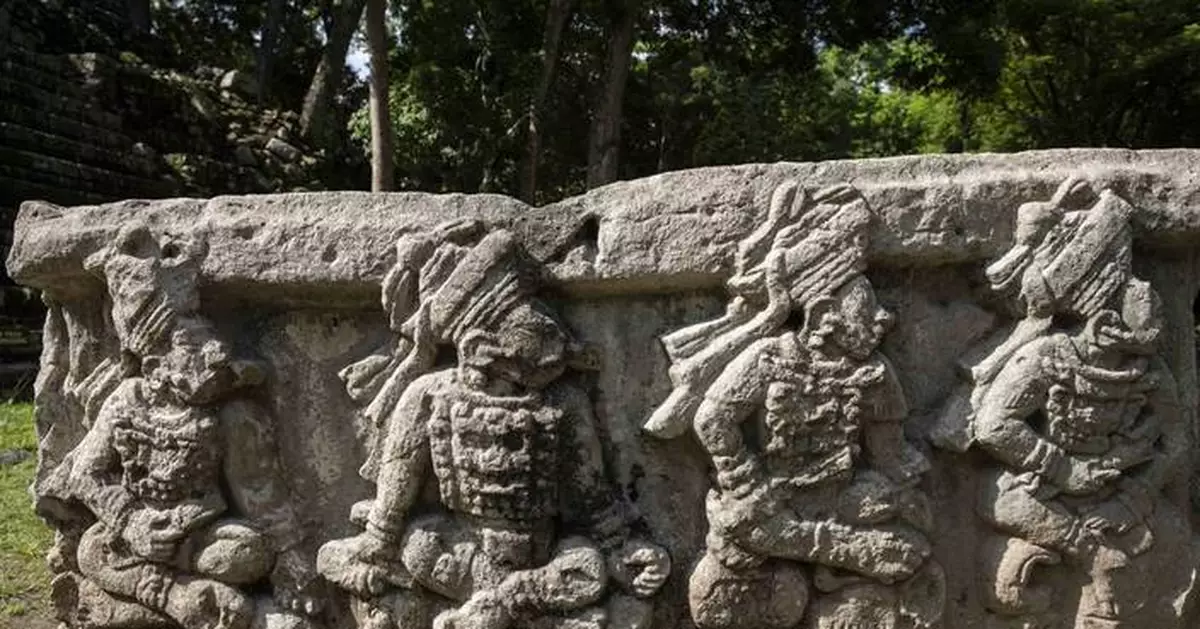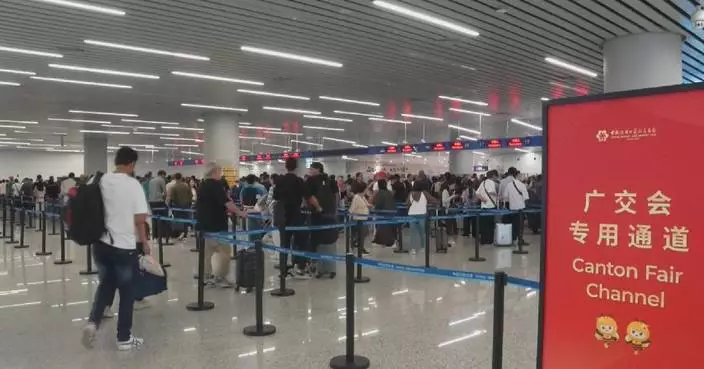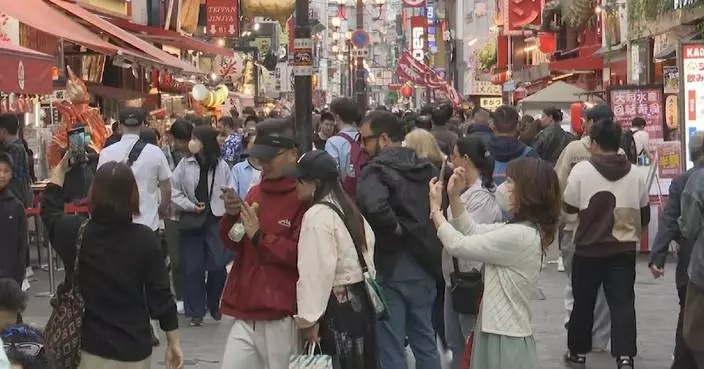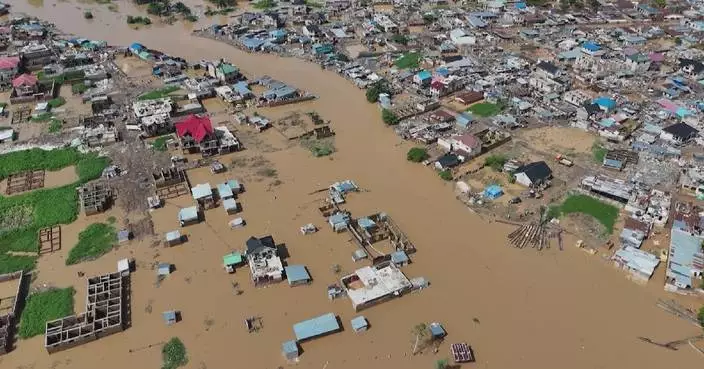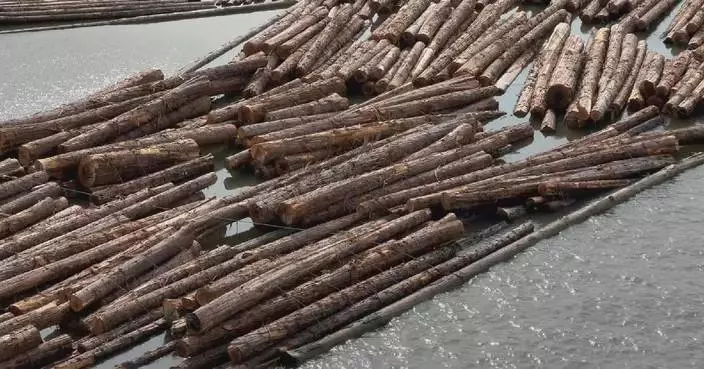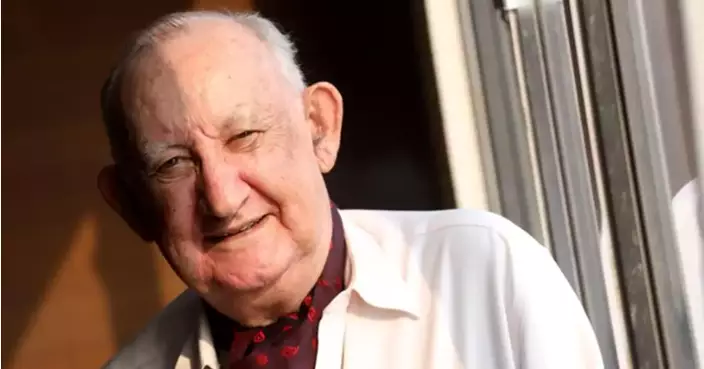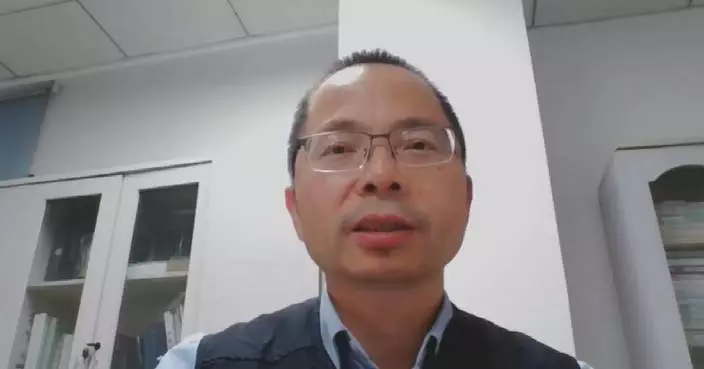WASHINGTON (AP) — Long before the ancient Maya built temples, their predecessors were already altering the landscape of Central America’s Yucatan peninsula.
Using drones and Google Earth imagery, archaeologists have discovered a 4,000-year-old network of earthen canals in what’s now Belize. The findings were published Friday in Science Advances.
“The aerial imagery was crucial to identify this really distinctive pattern of zigzag linear canals” running for several miles through wetlands, said study co-author Eleanor Harrison-Buck of the University of New Hampshire.
The team then conducted digs in Belize's Crooked Tree Wildlife Sanctuary. The ancient fish canals, paired with holding ponds, were used to channel and catch freshwater species such as catfish.
“Barbed spearpoints” found nearby may have been tied to sticks and used to spear fish, said study co-author Marieka Brouwer Burg of the University of Vermont.
The canal networks were built as early as 4,000 years ago by semi-nomadic people in the Yucatan coastal plain. According to the study, the canals were used for around 1,000 years or longer, including during the “formative” period when the Maya began to settle in permanent farming villages and a distinctive culture started to emerge.
“It’s really interesting to see such large-scale modifications of the landscape so early — it shows people were already building things,” said University of Pittsburgh archaeologist Claire Ebert, who was not involved in the study.
At the height of Maya civilization, people in this region built temples, roads, pyramids and other monuments. They also developed complex systems of writing, mathematics and astronomy. Scientists know far more about this era because there are many more significant archaeological sites, said Ebert.
But this new study reveals a link between the earlier people on the landscape and the later emergence of Maya culture. These ancient channels for catching fish may have played a role in helping later Maya pyramids rise above the Yucatan rainforest.
“This shows continuity," said University of Pennsylvania archaeologist Jeremy Sabloff, who wasn't part of the research.
On a practical level, the fish-trapping canals helped the early people in the region to diversify their diets and feed a growing population, building a foundation for later cultural heights.
The Associated Press Health and Science Department receives support from the Howard Hughes Medical Institute’s Science and Educational Media Group. The AP is solely responsible for all content.

This 2019 photo provided by the Belize River East Archaeology project shows investigations of wetland canal features in the CTWS by the research team in Belize. (Belize River East Archaeology project via AP)
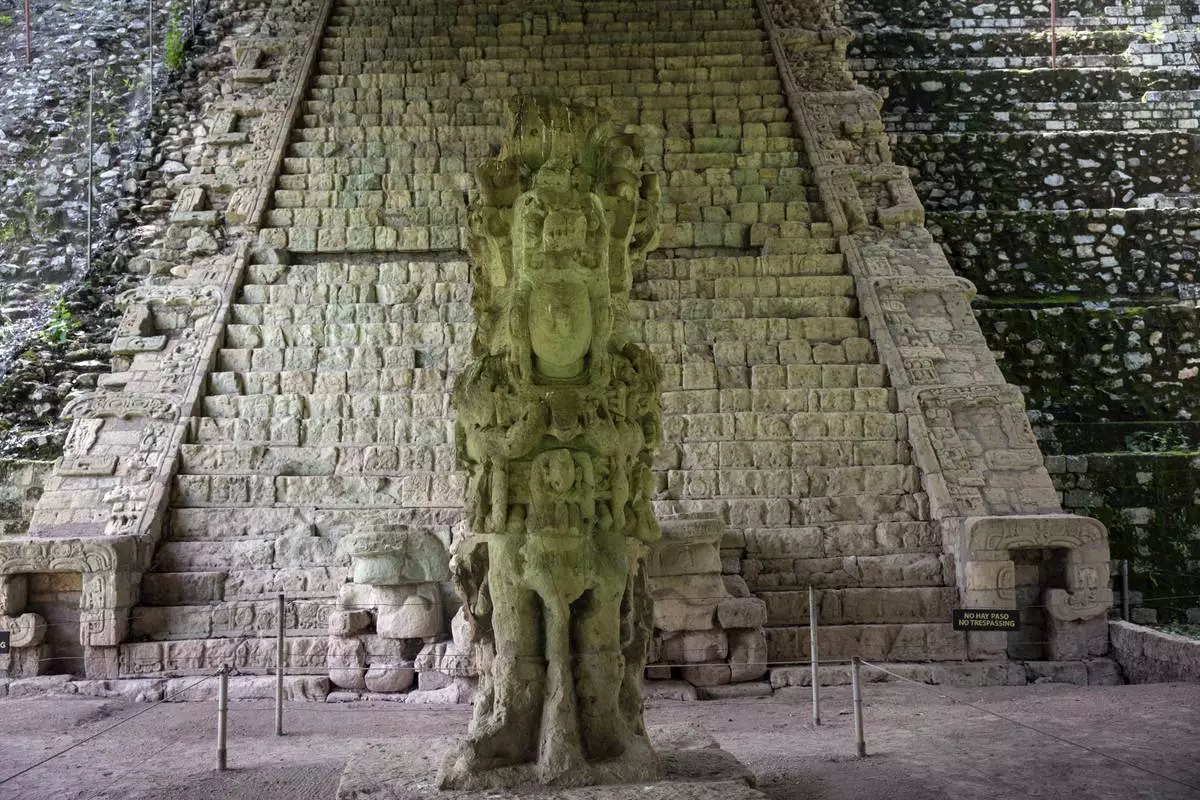
FILE - Stela M and the Hieroglyphic Stairway are seen inside the archeological site of Copan, in Copan Ruinas, Honduras, Saturday, July 3, 2021. (AP Photo/Rodrigo Abd, File)

This 2019 photo provided by the Belize River East Archaeology project, researchers excavate sediment that will be sequenced to help them date the evidence of a large-scale pre-Columbian fish-trapping facility in Belize. (Belize River East Archaeology project via AP)
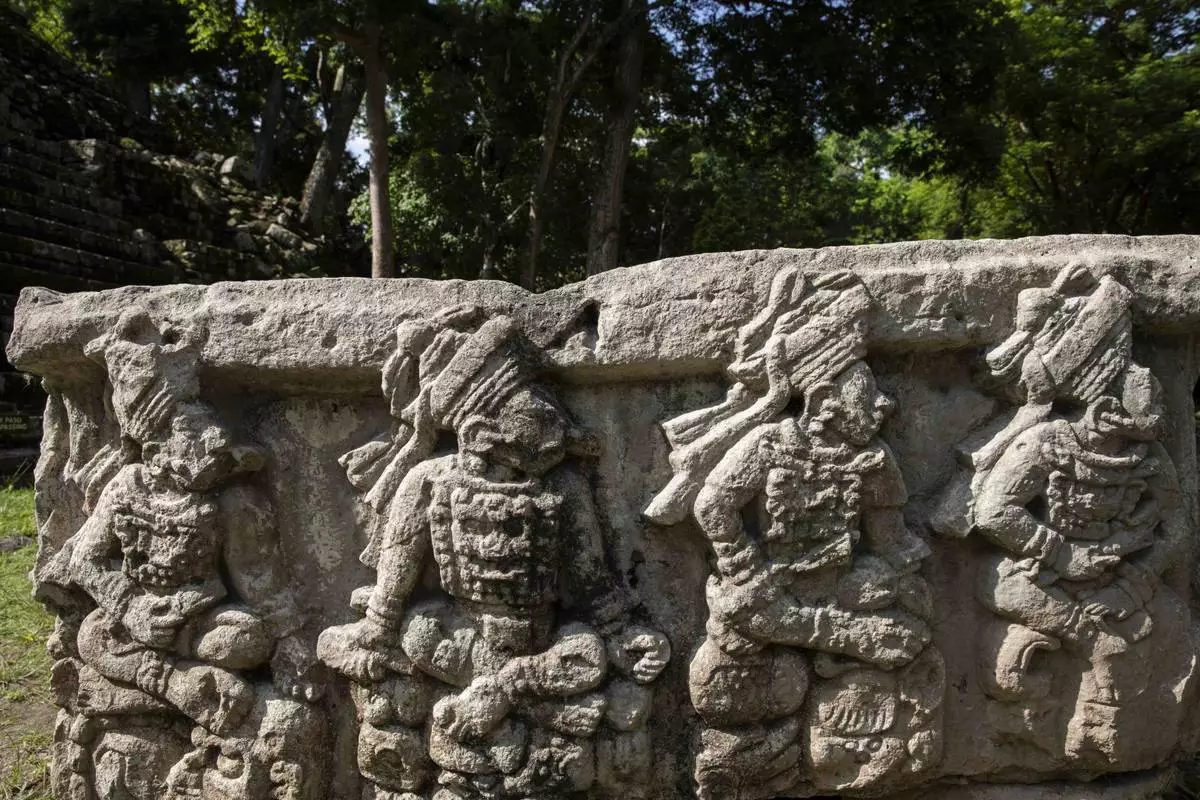
FILE - Altar Q that depicts 16 kings in the dynastic succession of the city is seen inside the archeological site of Copan, in Copan Ruinas, Honduras, Saturday, July 3, 2021. (AP Photo/Rodrigo Abd, File)
Oscar Piastri took his second win of the Formula 1 season in dominant style at the Bahrain Grand Prix on Sunday.
Piastri started on pole and kept Mercedes’ George Russell behind him, fending off a challenge for the lead after a safety-car restart.
Russell held on to second after defending his position on the last lap from Piastri’s McLaren teammate Lando Norris, who finished third after starting sixth.
“It’s been an incredible weekend,” Piastri said after claiming McLaren’s first-ever win in Bahrain. “To finish the job today in style was nice.”
Norris keeps the lead of the championship with a three-point advantage over Piastri. Defending champion Max Verstappen, who finished sixth, is five points further back in third.
Piastri had a no-drama run to the checkered flag, except for a drinks system which wasn’t working in the desert heat. Norris' race was a roller-coaster.
Norris made up three places off the start but was then handed a five-second penalty for starting too far forward on his grid space. After going down as far as 14th, he made up places and won a lengthy battle with the Ferraris of Charles Leclerc and Lewis Hamilton before falling short in his attempt to beat Russell for second.
“A messy race for me and disappointed not to bring home the one-two for McLaren,” Norris said.
Russell had to deal with electrical problems on his car and was facing an investigation into his use of the DRS overtake aid system. Russell said it had opened by accident when he pressed the button to use the radio but said he eased off and didn't gain an advantage.
Russell’s second place was the best result for Mercedes since Russell won the Las Vegas Grand Prix in November.
Leclerc was fourth for Ferrari after losing a hard-fought battle to Norris while his teammate Hamilton started ninth but cut through the field to finish fifth.
After last week’s race in Japan resembled a procession, with all of the top six finishing in the order they started, Bahrain offered a festival of overtaking.
Verstappen won last week but was never in contention in Bahrain and was even last at one stage. He survived an overheating car and a slow pit stop to place sixth, passing Pierre Gasly, who was seventh for Alpine.
Esteban Ocon of Haas was eighth, with Yuki Tsunoda ninth for his first points since joining Red Bull — and the team's first for any driver other than Verstappen since November — and Oliver Bearman 10th in the other Haas.
AP auto racing: https://apnews.com/hub/auto-racing

McLaren driver Oscar Piastri of Australia wins the Formula One Bahrain Grand Prix at Sakhir circuit, Sunday, April 13, 2025. (Andrej Isakovic Pool via AP)

McLaren driver Oscar Piastri of Australia celebrates after winning the the Formula One Bahrain Grand Prix, in Sakhir, Sunday, April 13, 2025. (AP Photo/Altaf Qadri)

Ferrari driver Lewis Hamilton of Britain in action during the the Formula One Bahrain Grand Prix, in Sakhir, Sunday, April 13, 2025. (AP Photo/Darko Bandic)

McLaren driver Oscar Piastri of Australia wins the Formula One Bahrain Grand Prix at Sakhir circuit, Sunday, April 13, 2025. (Andrej Isakovic Pool via AP)

McLaren driver Oscar Piastri of Australia celebrates after winning the the Formula One Bahrain Grand Prix, in Sakhir, Sunday, April 13, 2025. (AP Photo/Altaf Qadri)

McLaren driver Oscar Piastri of Australia wins the Formula One Bahrain Grand Prix at Sakhir circuit, Sunday, April 13, 2025. (Andrej Isakovic Pool via AP)

McLaren driver Oscar Piastri of Australia celebrates winning the the Formula One Bahrain Grand Prix, in Sakhir, Sunday, April 13, 2025. (AP Photo/Darko Bandic)

Second placed Mercedes driver George Russell of Britain, left, first-placed McLaren driver Oscar Piastri of Australia, center, and thrid placed Ferrari driver Charles Leclerc of Monaco pose after the qualifying for the Formula One 2025 Bahrain Grand Prix, in Sakhir, Saturday, April 12, 2025. (AP Photo/Darko Bandic)

Seond-placed Racing Bulls driver Isack Hadjar of France3= congratulates pole position winner McLaren driver Oscar Piastri of Australia during the qualifying for the Formula One 2025 Bahrain Grand Prix, in Sakhir, Saturday, April 12, 2025. (AP Photo/Darko Bandic)

McLaren driver Oscar Piastri of Australia in action during the qualifying for the Formula One 2025 Bahrain Grand Prix, in Sakhir, Saturday, April 12, 2025. (AP Photo/Darko Bandic)

McLaren driver Oscar Piastri of Australia reacts after winning the pole position during the qualifying for the Formula One 2025 Bahrain Grand Prix, in Sakhir, Saturday, April 12, 2025. (AP Photo/Darko Bandic)






